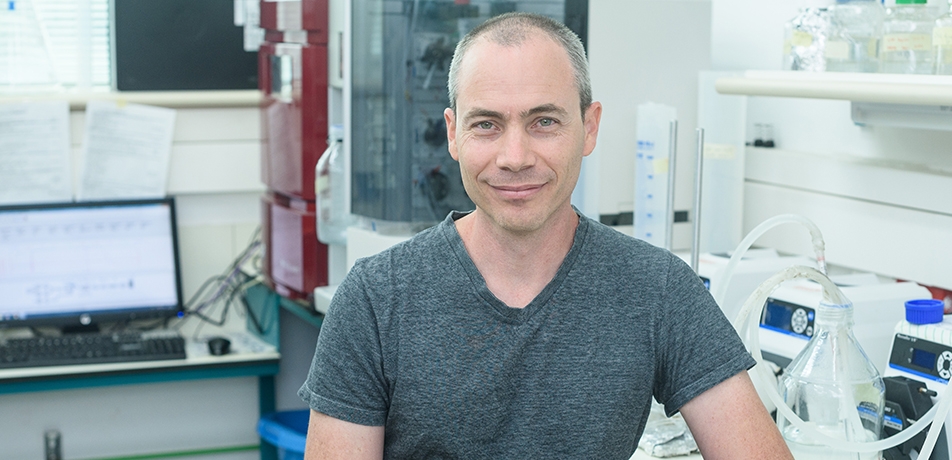Learning from lethal viruses
Insights on Ebola, arenaviruses pave way for Dr. Ron Diskin's next target—coronavirus
Briefs

In an effort to find solutions for the novel coronavirus disease, caused by the virus SARS-CoV-2, structural biologist Dr. Ron Diskin is expediting two parallel investigations to counter the disease based on his previous research on similar animal-borne diseases, and on the vaccine for Ebola, a virus that is also believed to have originated in bats, like SARS CoV-2.
Starting last October, Dr. Diskin, of the Weizmann Institute’s Department of Structural Biology, has made a series of crucial discoveries related to viruses that cross over from animals to humans. In fact, papers published just weeks before the coronavirus outbreak, and another one in recent weeks, may point to new ways to find a cure not only for the coronavirus—but a whole range of highly infectious and lethal viruses that cross over from animals (particularly rodents) to humans.
In January in Nature Communications, he described a molecular decoy he and his lab members engineered that leads a group of animal-borne viruses, called arenaviruses, to avert cell membranes—and thereby prevents infection. The lab plans to apply the same approach used to create this new molecule, which they called “Arenacept,” to the coronavirus.
In October and February respectively, Dr. Diskin published two other important studies, also in prestigious journals (Nature Medicine and Cell Host & Microbe), showing just how the vaccine against the Ebola virus activates the immune system to fight off the virus. In collaboration with partners in Cologne, Germany, the Diskin lab mapped out how the antibodies bind to the virus and destroy them—and discovered that smaller doses than what are currently administered are just as effective. The latter study identified the precise molecular target of these specific antibodies acquired by all vaccinated individuals and Ebola patients who had recovered from the disease, and described the mechanism by which a common immunological response against Ebola is elicited.
These discoveries are incredibly timely, and taken together with Dr. Diskin’s other insights on the mechanisms of lethal viruses, he plans to investigate the novel coronavirus—with his eyes set on a cure or vaccine.
In the first avenue, he is developing a therapeutic molecule based on his insights on arenaviruses. He is starting to conduct a comprehensive screening for identifying a decoy molecule that will have all the desired properties needed to construct an immunotherapeutic molecule (immunoadhesin). The hope is to determine the three-dimensional molecular structure of this decoy and to computationally design a decoy based on this data—which would be a basis of a possible treatment.
In the second avenue, he is collaborating with several groups to isolate antibodies from recovered coronavirus patients. They intend to elucidate three-dimensional structures to reveal how these antibodies bind to the SARS-CoV-2 virus. An understanding of this binding activity and mechanism might lead to a potential vaccine or antibody treatment for coronavirus.
In previous research, Dr. Diskin has studied how different proteins interact, and how those interactions underlie various pathological conditions, such as infection by human immunodeficiency virus (HIV). He has characterized the structure of a key protein found on the surface of HIV and how it binds to a targeted immune cell—research that may lead to the development of a vaccine or therapy for HIV.
To learn more about his research on arenaviruses, read here. To learn more about his October study on Ebola, see here.
Dr. Ron Diskin's research is supported by the Moross Integrated Cancer Center; the Dr. Barry Sherman Institute for Medicinal Chemistry; the Jeanne and Joseph Nissim Center for Life Sciences Research; and the estate of Emile Mimran.








